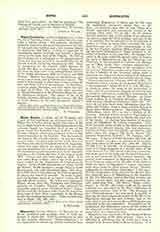

Hippo Regius, a titular see of Numidia, now a part of the residential see of Constantine (q.v.). Hippo was a Tyrian colony on the west coast of the bay to which it gave its name (Hipponensis Sinus); the surname Regius was bestowed on it as one of the places where the Numidian kings resided. Later it became a Roman colonia and prospered until A.D. 430, when it was taken by the Vandals. The Arabs rebuilt the town in the seventh century. It contains some ancient ruins, a hospital built by the Little Sisters of the Poor, and a fine basilica dedicated to St. Augustine. About two miles distant the Arabs in the eleventh century established the town of Beleb-el-Anab, which the Spaniards occupied for some years in the sixteenth century, as the French did later, in the reign of Louis XIV. France took this town again in 1832. It is now called Bone or Bona, and is one of the government centers for the department of Constantine in Algeria. It has 37,000 inhabitants, of whom 15,700 are French, 10,500 foreigners, mostly Italians, 9,400 Mussulmans, and 1400 naturalized Jews. The situation of the town is very pleasing, the climate agreeable in winter, but humid in summer. Its trade is good, and the harbor serves as an export station for all the rich inland country. We know seven bishops of Hippo, among them Sts. Theogenes and Fidentius, martyrs, St. Leontius Valerius, who ordained St. Augustine, and the great “Doctor of Grace“, Augustine himself (395-August 28, 430). Under St. Augustine there were at least three monasteries in the diocese besides the episcopal monastery. Three councils were held at Hippo (393, 395, 426).
S. PETRIDES

